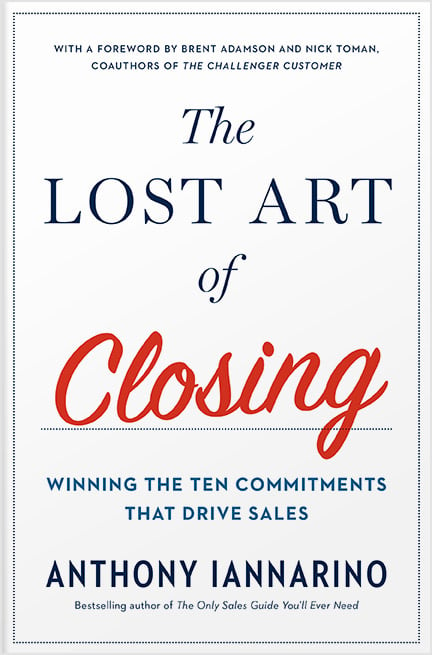When you miss your sales forecast or goal, there is almost always a deal or two (or three) that pushed, prospects that didn’t sign the contract by the end of the quarter. Leaving aside the fact that planning to close a deal at the end of the quarter is a bad idea and providing you no margin should you or your client experiences a surprise, a client pushing a deal once means one thing and pushing it three times is something different.
In one scenario, something unexpected happens, and your dream client doesn’t keep the commitment they made before the quarter ended. In other cases, the client demonstrates a pattern of not keeping promises and pushing things forward. These two varieties mean something different when it comes to forecasting.
One Push
It can be disappointing to have a deal you were counting on push into the next quarter. It can be much more discouraging when you have done everything right, controlling the process, gaining agreements for next steps, and keeping the whole process on track for you and your dream client. Despite your best efforts, some deals are going to push.
- Your dream client’s lawyers ended up dealing with a large, unexpected acquisition that required their time, and they didn’t even look at your contract. Maybe you could have controlled getting your paper to them earlier, but you had no way of knowing they would have been unavailable.
- Maybe your primary contact needed two people from executive leadership to approve your proposal, one of whom decided to elope and left the country for two weeks, leaving you without a signed contract.
- Your client is struggling with a client of their own, and they couldn’t devote the time or resources to you or your proposal and contract. The deal may be important to both you and your dream client, but the timing is more important to you—especially when you are trying to make your number at the end of a quarter.
Fair enough. The deal pushed. Many have pushed before. Many will push in the future, despite my best effort at providing a framework for controlling the process and gaining all the commitments in a way that improves your effectiveness in this area.No more pushy sales tactics. The Lost Art of Closing shows you how to proactively lead your customer and close your sales. 
Every Commitment Pushed
Some clients push deals forward more than once. They provide clues that should cause concern on the part of the salesperson and the sales manager forecasting the deal. This second variety of deal-pushers is more prevalent and more concerning than those that push a single time because the patterns emerge early.
Meetings get pushed. And then they get pushed again. Stakeholders who are supposed to be engaged are moved to other projects. Other stakeholders are unable to make meetings. The executive sponsor who should care the most about the opportunity is never available to meet with you or your team. Every stakeholder you have met seems to behave as if everything is a fire drill.
It’s not uncommon for a meeting to be moved. It is unusual for the same meeting to move two or three times—if the meeting is important to the people who are attending. Nor is it uncommon for stakeholders to move into new roles or new projects, but when the replacement for that role isn’t available for weeks or months, you have a hint as to what real timelines might be. In larger deals, the absence of an executive sponsor by itself may be enough to suggest that your deal may not be as a high a priority for your client as it is for you.
When the pattern you perceive is that your client misses many deadlines, cancels a lot of meetings, reschedules meetings, and generally works in reactive mode, you should not be surprised when these things happen at the end of the quarter. In many cases, these prospects or dream clients don’t even know it’s the end of the quarter (unless they’re salespeople).
Forecasting Deals
The likelihood that a deal that has pushed once comes in during the next quarter is high. The odds of a deal with a client that has a pattern of not being able to keep their commitments is far less certain.
Some sales managers and sales leaders do bad math when they forecast, relying on the stage in their sales process as a guide to forecasting. Many make the mistake of believing that the fact that a client has a contract and made a commitment to sign it is enough to forecast the deal confidently. Later, they are disappointed when these deals push.
In many cases, the experience pursuing the deal provided substantial evidence the deal was likely to push. The pattern of behavior on the client’s side offers a better indication as to when the deal will close than the stage in the process.
You are going to work with prospects and dream clients who are going to experience events and go through stages where it is difficult to get things done. Your role is to help them as much as you possibly can, taking into account that they’re struggling. If you want to help them, the best thing you can do is learn to control the nonlinear process that is the sales, buying, and change.
The One Push Rule
If a deal pushes once with a prospect who has a history of keeping their commitments, forecast it (if it doesn’t break your heart and cross the line the second day of a new quarter).
If a deal pushes more than once, pursue it, but leave it off of your forecast, especially if there is a pattern that suggests your dram client is struggling to keep their commitments.








.jpg?width=768&height=994&name=salescall-planner-ebook-v3-1-cover%20(1).jpg)


